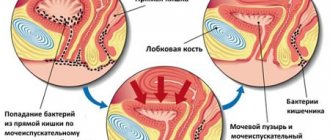Classification of infertility
Primary, or absolute infertility, is the case when it is impossible to give birth.
And the reason for this is all sorts of defects in the development of the genital organs - underdevelopment of the uterus, ovaries or their complete absence. And this diagnosis is possible in patients who have never been pregnant, in the case when they had regular sex life without protection. Secondary infertility is diagnosed for women who have already been pregnant at least once, and in this particular case cannot conceive a child. According to statistics, secondary infertility is the most common infertility.
Diagnosis of infertility
Activities for diagnosing infertility are carried out in a gynecological department or clinic at your place of residence. It is very important to carry out prevention of this disease among the population.
It must be said right away that infertility is a complication of various diseases of the human body. Preventive measures should already be carried out from childhood to consolidate these recommendations. First of all, you need to explain that you should protect yourself during sexual intercourse. This issue especially concerns teenagers. It is necessary to instill the concept of sexual intercourse and the purity of the genitals.
Most often, about 75% of infertility occurs due to various inflammatory processes. This process is observed in the genital area. This also includes infectious processes and the penetration of sexually transmitted agents.
As for women, about 80% of all women diagnosed with infertility were due to early abortions. Frequent changes of sexual partners also have a detrimental effect on a woman’s reproductive function. Much of the blame for this lies with the parents, who had to explain to their offspring that it is necessary to maintain the quality of their intimate life. Otherwise, in the future, the reproductive system may suffer due to mistakes in youth. Promiscuity is considered a mistake.
The most basic prevention of infertility is timely treatment of diseases of the reproductive system. After all, late detected pathology can lead to irreversible processes. If a process of inflammation occurs in the area of the mucous tissues of the reproductive organs, then adhesive processes form in the woman. And this is a direct road to the fact that a woman will not be able to have children. As for men, a different process is observed here. If he does not treat various diseases of his genital organs, the quality and quantity of sperm may decrease. Spermatozoa gradually lose their motility. Motility is the main function of the sperm.
Intimate life plays a huge role in human reproductive function. If a person has various chronic diseases of the reproductive organs, then further infertility can be assumed. The basic law for preventing infertility is personal hygiene of the external organs of reproduction, as well as a decent sex life. If there is a constant change of partner, the risk of infertility increases. This rule applies to both men and our fair half.
If a person has an infectious process, the patient experiences disruptions in the microflora in the genital area. And this process negatively affects the immune system; it gradually decreases. Further, if a person does not treat himself, then other pathogenic agents appear, which worsen the general condition.
Prevention of infertility most concerns the young part of the population. First of all, it is necessary to eliminate various bad habits (alcohol, cigarettes, drugs), unhealthy eating. Also, if immunity is reduced and a sedentary lifestyle also leads to the development of infertility. Any childbearing body should eat healthy food, which is rich in proteins, carbohydrates and fats. You should exercise and take time to relax. Based on this, you can give birth to a normal, healthy child without any problems.
An important disease is anorexia. This applies more to the female half of the population. This pathological process leads to a decrease in the function of the reproductive system. A woman will not be able to conceive a child normally, much less give birth to one. In the process of tissue metabolism mechanisms, subcutaneous fat produces the synthesis of the main hormone. This representative is estrogen. If a woman eats poorly, the production of this hormone drops sharply.
So, it is necessary to draw a conclusion. To prevent a woman from developing infertility, it is necessary to follow basic rules. These points are:
- Exclusion of various sexual promiscuity.
- Avoiding abortion.
- Use of various means of contraception.
- If various pathological processes appear in the reproductive system, you should immediately consult a doctor.
Also, to reduce the risk of infertility, a woman should keep her genitals clean. In addition, you should:
- Avoid stressful conditions.
- Eat healthy and wholesome food.
- Elimination of various bad habits (smoking, alcohol, drugs).
- Constant monitoring by a doctor regarding the reproductive system (prophylactic examinations).
If you follow the above recommendations, you can avoid the terrible sentence of infertility.
Endocrine infertility in women symptoms
Hormonal infertility, or endocrine infertility as it is also called, is one of the most common problems that women face when they cannot get pregnant.
A woman can determine that there are problems with hormones herself by simply measuring her basal body temperature, or purchasing an ovulation test. If a symptom of infertility is a hormonal disorder, then the first sign will be a violation of the woman’s ovulation. When measuring basal temperature, a woman will notice that the graph is stable and constant, and in the ovulation test you will see a negative value.
An endocrine disorder in a woman manifests itself in irregular periods, which are either absent altogether or quite abundant, with severe pain. A disease such as amenorrhea is a disease when menstruation is completely absent.
During a hormonal imbalance, a woman may notice significant hair growth on her body, which occurs in the navel area, on the stomach, and also on the forearms and legs. This means that the amount of androgens in the body is significantly increased.
When there are a lot of hormones in the body, this is accompanied by acne, skin oiliness increases, and seborrhea occurs. If these signs are detected, the doctor will prescribe hormone tests.
Signs of infertility during physical, laboratory and instrumental examination
Symptoms of infertility in girls can be detected during a physical examination. These are the signs:
- The patient suffers from dystrophy or obesity. In this case, body weight is 25% or more more or less than normal.
- The skin is very pale, which indicates endocrine system disorders. If the ears become pale instead of pink, the woman may have iron deficiency anemia.
- The mammary glands are poorly developed. For example, the nipples are very small in relation to the breasts.
- Seals in the pelvic area, and when you press on them there is pain.
- Symptoms of diseases of the reproductive system, which are detected when examining the vagina and cervix using speculum or colposcopy.
In addition, signs of infertility are determined during laboratory and instrumental examination. For example, on an ultrasound, a doctor may see underdevelopment of the ovaries or thyroid gland, as a result of which the production of hormones is inhibited. Laparoscopy can detect obstruction of the fallopian tubes, the presence of adhesions, tumors, cysts, and inflammation.
Infertility can also be associated with brain diseases. If tumors are detected on an MRI, they may be inhibiting the production of hormones necessary for successful conception.
Infections
Very often, both sexes have various types of infections that are sexually transmitted.
The most dangerous are those that are asymptomatic and often painless. These are infections such as candidiasis, or thrush, genital herpes viruses, human papillomavirus, chlamydia, etc. The danger of such infections is that with their appearance, inflammation of the genital organs and adhesions in the tubes may occur, which leads to infertility. Therefore, when you start planning a pregnancy, you will definitely need to do a blood test and genital tract smears to rule out infections.
Diagnosis of male infertility
Diagnosis of infertility in a man is carried out in order to find out the cause of the disease, as well as to carry out further treatment. There are basic criteria that must be met in order to fully carry out the diagnostic plan. These are:
- The doctor examines the patient. That is, the man’s genitals and their general condition are studied.
- Next, the man’s medical history is studied. That is, the doctor questions the patient. Have there previously been various surgical interventions, injuries, or other pathological processes in the reproductive system. It would not hurt the doctor to find out the man’s various sexual habits.
- Carrying out a spermogram. That is, sperm is taken from a man, which is then used to study it in the laboratory. Both the quantitative and qualitative composition of this seminal fluid are studied. This examination makes it possible to assess the vital capabilities of male reproductive cells. Can they even perform their main function - to fertilize an egg?
- Study of various infectious processes in the male body. It is necessary to clarify the processes of inflammation in the reproductive system.
In the end, if all examinations showed the norm, then it is necessary to look for the cause not in the man, but in the wife. After all, infertility cannot be immediately identified; it is often wrong when infertility is diagnosed to this or that person.
If the above examinations are not enough, then the attending physician prescribes additional research methods to put a final point on this issue.
As for additional techniques, they sometimes solve the problem of diagnosing infertility. These are:
- Examination of the scrotum with an ultrasound device. This technique makes it possible to evaluate the activity of this organ; it is often possible to identify varicocele, inflammation of the testicle, or other pathological processes.
- Studying a man's blood to determine the level of hormones in the body. If an excess or deficiency is detected, then it is urgent to sound the alarm and resolve this issue. The most important hormone in men is testosterone. It is he who is responsible both for the sexual development of a man and for the production of male germ cells, their activity and main function.
- Collecting urine for laboratory testing. In this case, you need to collect urine after ejaculation with sperm. If traces of sperm are detected in the urine itself, then we can say that the man has retrograde release of sperm in the cavity of the bladder.
- Performing a testicular biopsy. That is, the required amount of tissue is collected, which will be further examined on histology. This method can ensure that it is known whether sperm, that is, male reproductive cells, is produced normally. This technique is justified; it can be safely used if a man is suspected of infertility.
- Genetic genesis analysis. If a man has a low sperm count, then one may suspect that there are genetic problems. Genetic studies make it possible to solve this problem and find out the etiology of this pathological condition.
- Ultrasound examination of transrectal origin. This method excludes or confirms blockage of the vas deferens, otherwise the seminal vesicles.
A good additional method for examining a man to identify or refute infertility is the functional technique. That is, as soon as sperm is isolated, the lifespan of male reproductive cells is studied in the laboratory. Thus, this point can be clarified and resolved.
Treatment measures are carried out only when the male body has been fully diagnosed. The treatment includes the following points:
- Surgical treatment of infertility. That is, all kinds of operations are carried out to ensure that a man can have his own offspring. This could be an operation on the vas deferens, that is, to eliminate obstruction. Vasectomy is also performed, as well as other techniques that are individual for each patient.
- Relief of infectious processes. For this purpose, antibacterial agents are prescribed to stop the inflammation process. But a cured infectious process does not always enable a man to have his own child.
- Therapy of hormonal origin.
- Solving a sexual issue. First of all, it is necessary to solve the problem if there is erectile dysfunction.
- Carrying out fertilization of an alternative plan. There are many ways to carry out such a procedure.
First of all, you should always remember that you should not delay visiting a doctor if you have been unable to conceive a child for several years. Many patients are afraid to go to the doctor, that is, they panic. This should not be done. In most cases, it is possible to cure a patient with secondary infertility. First, you need the main reason in order to eliminate it, if this is of course possible. You will have to conduct various studies for a long time and visit frequently, since the condition is a very serious problem.
First of all, any woman needs to visit a gynecologist and undergo an examination. This is not done right away; first, an appointment is made in advance, and the doctor himself sets the date for the patient’s appointment. After all, it is necessary to check your basal temperature for a certain period of time every day, and also use tests at the time of ovulation. These results are collected together and it is easier for the doctor to build tactics for further diagnosis or treatment.
It is important to carry out ultrasound diagnostics. This study is carried out not once, but several times. The reason for this is the study of the endometrium in various phases of the menstrual cycle. In addition, the general condition of the ovaries and uterus is studied.
To check the patency and consistency of the uterine tubes, hysterosalpingography is performed. And to check the condition of the uterus, a hysteroscopy is performed. If it is necessary to remove any cause in the uterus, for example, a cyst, then laparoscopy is performed. The element of interest in the uterus is removed. If there are adhesions, then you can separate them using the same method.
It is mandatory to exclude various infectious processes. An analysis is taken to exclude herpes simplex, cytomegalovirus, ureaplasmosis, mycoplasmosis, chlamydia and others. These infectious agents can lead to the development of inflammation processes. And this negative process leads to the fact that a woman develops infertility of secondary origin. Smears are taken from the vagina without fail. As for taking blood to detect antibodies to infection, there are often erroneous results.
After the above measures, the woman’s hormonal levels in the body are checked. Before taking this test, a woman should prepare for it in advance. The patient should not eat or drink any liquid. In addition, such an analysis is taken on the 3rd day of the menstrual cycle. This event is aimed at determining whether there is a high level of male hormones. In addition, the level is determined:
- Follicle-stimulating hormone.
- Luteinizing hormone.
- Prolactin.
- Estradiol.
- Progesterone.
- Cortisol.
As for male examination, it is also necessary to carry out some diagnostic measures. An analysis is carried out to detect antibodies of antisperm origin. However, they should not be allowed to approach the egg.
The patient also needs to visit some doctors (andrologist, urologist). An ultrasound examination is performed and sperm is collected for a spermogram. In individual cases, a MAR test is performed. After the above diagnostic measures, the attending physician prescribes any necessary treatment.
Today there are many techniques to help a person. After all, the inability to give birth to a child is a great tragedy for any person. If for some reason it is not possible to help a person to restore his reproductive function, there is an alternative. Surrogacy and in vitro fertilization are a salvation for infertile couples.
Infertility: types, causes, diagnosis. Unfortunately, the level of infertility today reaches such levels that almost all leading specialists in the field of obstetrics and gynecology talk about it. The variety of forms contributing to the factors of this disease becomes much larger every year, even despite the high level of medical care provided to the population. That is why doctors are trying to attract the attention of the younger generation, who have just entered the period of reproductive age, in order to communicate in the most accessible way about the problem of infertility and familiarize them with ways to prevent it. The figures that reflect the level of infertility throughout the world cannot please representatives of the medical field. We are talking about 15-20% of infertile couples who are doomed to have their own child in the family. But for several decades now, even the most severe form of infertility has been skillfully dealt with by modern alternative methods of fertilization. But before choosing one of the methods of reproductive technologies, it is necessary to clearly establish the cause of the disease and possible ways to resolve this problem using conservative treatment methods.
Types of infertility. According to the latest data, the classification of forms of infertility has a broad focus. Thus, this pathology is classified according to certain criteria, among which they especially highlight - forms of infertility in relation to gender, forms of infertility in relation to the frequency of occurrence, forms of infertility in relation to the severity of the pathological process. Among the world practice of reproductive clinics and other organizations dealing with medical statistics, infertility is usually divided into male, female and combined infertility. The incidence of infertility in the female population is around 40-45%, while rates of male infertility range from 37-40%. Combined or familial infertility accounts for about 15% of the total population.
Primary infertility, this category of infertility can be rationally attributed to the female form of infertility, and here’s why: this diagnosis is made based on a number of reasons related to obstetric history. Primary infertility is diagnosed only when a woman cannot become pregnant from her partner for more than one calendar year, without using various contraceptives. In addition, the main criterion for primary infertility is the absence of previous pregnancies and births. About 20 years ago, according to statistics, primary infertility was at least twice as common as secondary infertility. Today, the situation has acquired a slightly different character - for this it is necessary to consider in more detail the definition of secondary infertility.
Secondary infertility is a diagnosis that is made in the absence of pregnancy after a woman has been pregnant at least once. As mentioned earlier, secondary infertility was much less common than primary infertility. Now the situation has changed, and the frequency of secondary infertility has increased due to the introduction of modern reproductive technologies. A procedure such as in vitro fertilization can solve the problem of infertility at any level of complexity, however, as side effects, IVF includes a predisposition to the development of complications in the functioning of the female reproductive system, up to secondary infertility.
Causes of infertility, treatment. Studying to this day various hidden facts about the development of this or that disease, which doctors are still not so easy to cope with (oncology, AIDS, genetic diseases), the etiology of infertility has reached a new level, and leading experts are trying to study this problem in many ways. . As it turned out, the causes of infertility are not fully understood, so over the last decade a group of psychological factors has been included that contribute to the occurrence of difficulties in fertilization.
Diagnosing the cause of infertility is not difficult, since according to the latest data, the number of diagnostic methods that are actively used in the reproductive sphere numbers about 100 items, ranging from the simplest clinical and laboratory studies that were used at the stage of the development of medicine, ending with complex instrumental diagnostic measures that provide an opportunity to study in depth the properties of an organism at the molecular, genetic and other levels. The number of necessary studies is determined by the spouses’ attending physician, and the equipment available for various diagnostic measures is at the highest level in almost every city in our country. The pricing policy for diagnosing infertility depends primarily on the severity and clinical form of infertility. Sometimes a basic range of studies is enough for spouses to establish the true cause of the illness of one of the spouses.
The causes of infertility in women require special attention, since in most cases the cause of an infertile marriage is precisely the problems of the female reproductive system. Scientists have grouped some of the causes of infertility in women in order to more easily classify the form of pathology. Among the most common causes of the disease are the following:
- Diseases of the female reproductive system
- Endocrine disorders
- Injuries and surgical interventions on the female reproductive system
- Autoimmune diseases
- Infectious diseases (HIV, AIDS, tuberculosis)
- Congenital anomalies of the development of the pelvic organs and brain structures
- Mental disorders
Male infertility causes and treatment. Due to the fact that the level of male infertility has increased significantly in recent years, leading experts in the field of reproductive health have begun to actively study the etiological factors of male infertility from a new point of view. When studying the problem, some socio-biological aspects of the life of the younger generation were taken into account - the level of sexual education, average rates of the onset of sexual activity among young men, etc. Thus, the data obtained led to the following conclusions: male infertility is often contributed to by:
- Inflammatory diseases of the male reproductive system
- Injuries and surgical interventions on the pelvic organs
- Venereal diseases
- Infectious diseases
- Congenital anomalies of the development of the male reproductive system
- Immaturity of brain structures responsible for regulating reproductive function
- Genetic abnormalities
- Exchange disorders
- Severe somatic diseases
A doctor dealing with infertility in our country has a special focus in work and education. Among many medical professions, a reproductologist is a rather narrow specialist whose popularity in the profession has arisen not so long ago. The activity of this specialist consists of timely identification of factors that impede natural fertilization, high-quality diagnosis of infertility, and selection of the optimal method of conservative treatment of diseases that led to the problem of infertility. Due to the fact that a doctor of this type belongs to the category of specialists who deal with a specific problem, visiting his consultation is not so easy, especially for those people who live in places remote from large cities in Russia.
A doctor who treats male infertility is called an andrologist. Despite the fact that a reproductive specialist has the ability to solve the problem of both male and female infertility, his territorial availability is quite limited. In addition, as statistics show, men, if they suspect any abnormalities in the male reproductive system, most often turn to a urologist or surgeon. The activity of an andrologist is to timely identify the pathology of the male reproductive system associated with disorders of sperm formation, its release and other pathological conditions.
Diagnosis of infertility in the classical view consists of several stages. Examination of patients with suspected infertility should take place in a certain order. If problems arise with conceiving a baby, both spouses are subject to examination, even if there are direct indications for female or male infertility. The second, no less important, condition for diagnosing infertility is the structure of the examination of patients. Often, doctors use the classic examination scheme for a gynecological/urological patient, adding only modern diagnostic measures to the examination scheme in order to speed up the process of clinical measures and establish the true cause of infertility. According to medical sources, the classic research scheme consists of the following stages:
- Taking anamnesis (examination, questioning, etc.)
- Clinical laboratory tests (blood tests, urine tests, cultures, etc.)
- Additional instrumental studies (ultrasound, MRI, radiographic examination, laparoscopy, etc.)
Health problems
Diseases such as endometriosis, polyps in the uterus, fibroids, and even the consequences of abortion can cause infertility in a woman.
If you have any of the above diseases, then most likely you observe periodic bleeding after sexual intercourse, and there may also be bleeding from the middle of the menstrual cycle. This is treated with therapy. If there are problems with the ovaries and cysts that arise there, the doctor will most likely prescribe you hormonal contraceptives in order to correct the functioning of the appendages.
Thus, if you find at least one of the above symptoms, if you are planning a pregnancy, consult a doctor immediately, because timely consultation with a doctor is already half the solution to the problem.
Causes of female infertility - why don't you have children?
In fact, there are so many reasons that it is simply impossible to list them all in one article. Therefore, we will highlight the main ones:
- Problems with ovulation. With a menstrual cycle of more than 35 or less than 21 days, there is a risk of egg non-viability or immaturity. There are often situations when the ovaries simply do not produce mature follicles that can subsequently become eggs. As a result, ovulation becomes impossible, and sperm, alas, simply have nothing to fertilize. There is a solution - ovulation stimulation.
- Ovarian dysfunction. A fifth of all situations of ovarian dysfunction are a problem with hormone production. With such disorders, the production of hormones decreases or increases, their ratio deviates from the norm, which leads to a disruption in the process of follicle maturation.
- Hormonal disorders. Any hormonal imbalance in a woman can lead to a lack of menstruation and egg maturation.
- Early menopause. Traditionally, menopause occurs between 50 and 55 years of age. But for reasons that are still unknown to experts, egg reserves in some cases run out much earlier - at 45, or even 40 years. Then we are talking about ovarian depletion, which can sometimes be cured with hormonal therapy. Usually this reason is a hereditary phenomenon.
- Genetic disorders. Cases when a girl is born with impaired ovarian function/development (or even their absence), unfortunately, also occur. Such disorders lead to the impossibility of egg maturation.
- Polycystic ovary syndrome. In the presence of such a disease, changes begin in the balance of hormones, as well as in the ovaries. As for external symptoms, polycystic disease manifests itself as menstrual irregularities, excessive hair growth, and lack of ovulation.
Problems associated with the cervical canal environment. If the mucus of the cervix is toxic, active sperm die at the start of the egg. If this mucus is too thick, it becomes difficult for sperm to overcome this barrier.
- Cervical erosion. Even before direct treatment of infertility, all existing polyps and erosion of the cervix require mandatory elimination. Often they become the very, only cause of infertility.
- Obstruction (change in mobility, damage) of the fallopian tubes. As a rule, this happens due to inflammatory processes, as well as due to any damage to the tubes during an abortion, not the most successful birth, or existing diseases of the internal organs. Among other things, infertility can also be caused by congenital underdevelopment of the uterus and tubes (several percent of all cases).
- Scars on the ovaries. Scarring caused by infection or surgery causes the ovaries to stop producing follicles.
- Unruptured follicle. It happens that a maturing follicle (there is no explanation for this fact) does not rupture in a timely manner. As a result, the remaining egg in the ovary cannot take part in fertilization.
- Endometriosis. In the absence of deviations from the norm, the function of endometrial cells is to participate in menstruation and help in feeding the fetus. In the case of endometriosis, proliferating cells cause disruption of the maturation of the egg and its attachment to the wall of the uterus.
- Anomalies in the structure of the uterus, the presence of formations. With polyps, fibroids and other formations, as well as with congenital anomalies (the presence of a double uterus, bicornuate, etc.), the altered structure of the uterus is an obstacle to the attachment of the egg to the endometrium (as, for example, in the case of the uterine device).
Tubal-peritoneal infertility
It is difficult to overestimate the importance of the fallopian tube in the process of conception, because it is there that the egg meets the sperm and their fusion takes place.
It is the patency of the tube, the normal function of the villi of its mucosa and the correct peristaltic movements that determine the success of fertilization of the egg, its advancement towards the uterine cavity and further implantation of the embryo into the endometrium.
The tubal factor and changes in the pelvic peritoneum account for up to 40% of the other causes of infertility. Most often this form develops as a result of:
- disturbances in the patency of the fallopian tubes due to inflammatory changes (salpingitis) due to various infections, hypothermia;
- endometriosis with damage to the uterine appendages and pelvic peritoneum;
- tube removal after ectopic (tubal) pregnancy;
- after operations on the pelvic organs, removal of the appendix, which led to the formation of adhesions that compress or deform the wall of the pipe from the outside;
- previous abortions, complicated births.
In case of tubo-peritoneal infertility, due to the presence of adhesions in the lumen of the tube or adhesions from the outside, the process of fertilization and advancement of the embryo to the uterine cavity is disrupted. At the same time, the ovulatory function of the ovary is preserved, there are no endocrine disorders in the body, and the structure of the endometrium corresponds to the phase of the normal menstrual cycle. With this type of infertility, the use of assisted reproductive technologies with the transfer of ready-made embryos into the uterine cavity can be very effective.
Diagnosis and treatment of infertility
Female infertility: diagnosis. The specificity of the examination of the female body is to study the function of hormonal regulation of the female reproductive system, in particular the regulation of the menstrual cycle. In addition, taking into account the structural features of the neurohumoral regulation system, experts focus on studying the endocrine glands, which are part of not only the female reproductive system, but also the endocrine system, in particular. The stability of the work of these structures is influenced by both medical history (presence of abortions, ectopic pregnancies, miscarriages, etc.) and concomitant diseases, and data on heredity from the woman’s relatives is also important.
Laparoscopy for infertility is used quite often, since this surgical intervention has several positive qualities. First of all, this modern surgical intervention makes it possible to remove the required area and pathological neoplasm from the pelvic organs for a thorough examination. Secondly, eliminating that same pathological focus can automatically solve the problem of infertility. At the same time, the laparoscopic method is actively used in any surgical field, since its indicators of minimal trauma to organs and a high level of speedy physical recovery amaze many specialists.
Uterine forms of infertility
Various gynecological diseases with disruption of the normal structure of the endometrium, damage to the myometrium, tumors, as well as malformations of the uterus can also be causes of infertility in the presence of ovulation.
Among the most common diseases from this group is internal endometriosis, which is accompanied by the appearance of endometrioid heterotopias in the myometrium.
In this case, as a rule, the normal structure of the uterine mucosa is disrupted, heavy and painful bleeding appears, deformation of the uterine walls occurs, and secondary endocrine and psychological disorders are also possible, making it difficult for pregnancy to occur.
Uterine fibroids, although a benign tumor, can also cause many problems when trying to get pregnant. It is increasingly found in women of reproductive age, and the reasons for its development are not fully understood. Myoma causes deformation of the uterine cavity, and, located under the mucous membrane (submucous fibroids), it significantly prevents the normal development of the endometrium in accordance with the phase of the menstrual cycle and predisposes it to hyperplasia and the growth of polyps.
Endometrial hyperplasia, polyps, endometritis, as well as repeated diagnostic curettages are accompanied by changes in the normal structure of the uterine mucosa, which prevent, first of all, the implantation of the fertilized egg and the further development of pregnancy even after ovulation has taken place and subsequent fertilization. In such cases, either the pregnancy does not develop and the woman does not suspect that fertilization has occurred, or it is terminated in the early stages.
Malformations of the female reproductive system can cause both primary and secondary infertility. It is clear that such severe disorders as the absence of a uterus will lead to the impossibility of pregnancy even in the presence of ovaries and fallopian tubes, although, most often, there is a combination of different types of defects.
A bicornuate uterus can also cause infertility if it is severely deformed or there are endometrial disorders, but there have also been cases of successfully completed pregnancies that occurred in one of the horns.
When is infertility diagnosed?
The diagnosis is made if the following conditions are present:
- sexual relations for 1 year without using contraceptives;
- unprotected sexual intercourse in women over 35 years of age for 6 months.
Fertilization requires the successful movement of the sperm to the egg. Their connection occurs in the fallopian tube, and the resulting embryo moves into the uterus, and after its attachment, pregnancy occurs.
The presence of pathology causes problems with fertilization, therefore proper identification of the cause and options for its elimination are required. At the same time, the factors influencing the success of conception are of a different nature.
Treatment of female infertility
When all the tests have been completed and the cause of infertility has been determined, treatment begins. Therapy depends on test results and may have different recovery times. The main thing is patience and compliance with all the specialist’s recommendations.
When the results of all tests show that there are no violations and pregnancy does not occur, there are several methods that must be used:
- The first method is when a girl calculates the days of her ovulation. Here it is also important to know that a man’s sperm mature in 48-72 hours, therefore, in order to obtain high-quality and mature semen, it is not recommended to have sex every day for a fruitful conception. It is important to choose the right pose. For example, in the woman-on-top position, a large amount of sperm will simply flow out. After sexual intercourse 10 minutes. you need to lie on your back, and if the uterus is bent, on your stomach.
- If tests have shown that infertility is a response to hormonal imbalance, then with this diagnosis, medications are prescribed that normalize hormones and stimulate the activity of the egg and ovaries.
- The third way to get pregnant is when, using ultrasound, doctors determine the moment of follicle maturation and prepare the body. And when the mature egg is released, it is artificially fertilized with the sperm of the male partner.
- If a woman has tubal obstruction, it is recommended to do IVF: the doctor takes eggs from a woman who is under anesthesia and artificially fertilizes them. The embryos are kept in a test tube for 72 hours and after this time they are transferred to the girl’s uterus.
- A common method of donation is when a woman can carry a child herself, but for some reason her eggs do not mature. To do this, a donor egg is used and, after fertilization, is placed in the woman.











